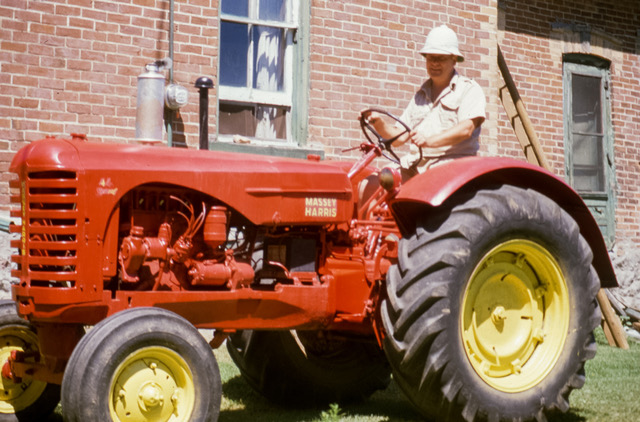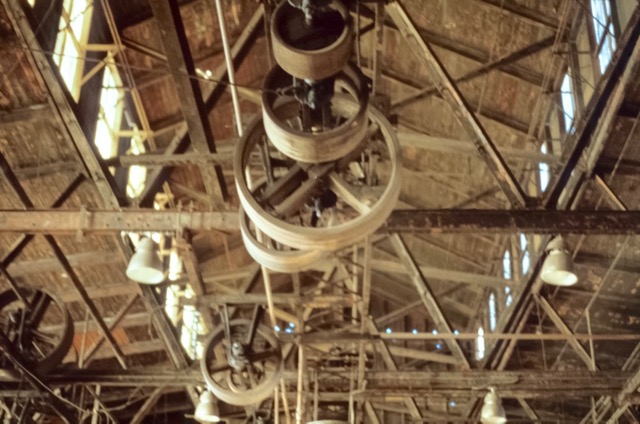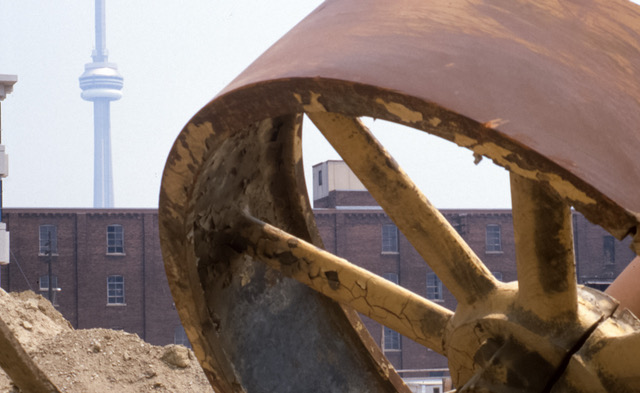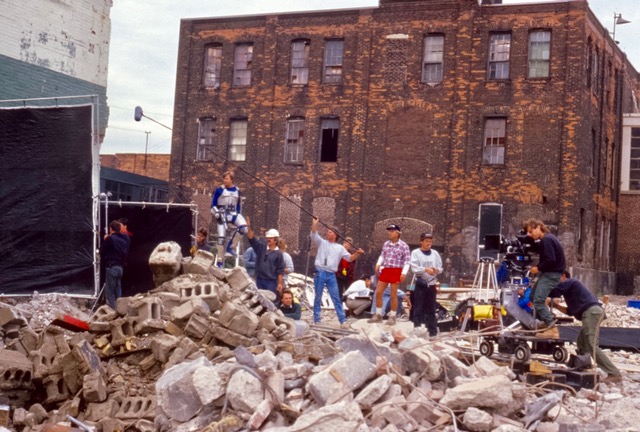EPISODE 279 THE MASSEY FERGUSON DEMOLITION: AND IDEA DAWNS IN MY HEAD









alan skeoch
March 2021
THE demolition of the Massey-Harris — Massey-Ferguson Toronto factory was not an easy one day
job. It took months. The factory sprawled along King Street … many old red brick buildings blackened
by time and the soot of passing coal fired locomotives. Most of the buildings were utilitarian in design…boxy,
three stories high, loading ramps. Unchanged and no doubt inefficient. After saying all that, I loved
them because I felt close to the Massey family who contributed much to early Toronto after moving their tiny Newcastle factory
to Toronto. Thousands of Torontonians eventually worked for the Masseys. Their company in the late 19th
and early 20th century was exporting farm machines all over the world.
For a short few months in the 1980’s I even owned a Massey Harris 44 tractor. Bought it for $500 at a farm sale
North west of Erin and drove it to our farm. That was a great joy…the trip on the big red machine which was
by 1980 long past its glory days. A drag tractor. No hydraulics. As obsolete as the Dodo. “Nice tires, must
be a good machine…new paint…new Massey Harris logo.” I was fooled by appearance. The tractor had
wheel baring problems, ignition problems which were bad enough but the big problem was the turning
radius. Our farm is small with many obstructions. Just to turn the Massey 44 around involved forward, then
reverse, then forward, then reverse.
So I drove it down to Sherwood Hume’s farm auction and Sherwood nearly got me my money back. Maybe
lost a hundred dollars but that was not a loss because I had the joy of the overland trip to the farm
on the summer day when first purchased. Worth a $100 loss.

The Massey Harris machines had a good market in the British empire hence
my colonial helmet above. They also had a good market as far away as Russia.
But by 1980 the market had shrunk and the machines made in Toronto struggled to
compete with John Deere and International Harvester. By 1980 not much
was being made in those Toronto factories.
So the wreckers were called and arrived with their wrecking tools like the one
pictured below. Small tool.

The teeth of this Excavator could chew the Massey factory into tiny bits of scrap’…
bricks, beams, and line shafts.
Line shafts? What in hell’s half acre is a line shaft, some readers might ask?
Take a gander below. A line shaft is a long iron cylinder with a series of pulleys
of various sizes. The big pulley…the drive pulley…I call it the bull wheel…was
pictured in Episode 274. A huge wheel that was once the pinnacle of industrial
technology.

Memorize this line shaft. It is part of my story. It took me several weeks to have
the courage to remove these pulleys because they were so high above the floor.
“Do you mean, Alan, that you removed all these pulleys?”
“Hard to believe, I know.”
“Why would you do that…sounds insane?”
“Long story … which is why I am sending this Episode.” (#279)


Most of the Massey buildings featured post and beam construction. Hundreds of
white pine pillars painted factory green and bashed all to hell by hand carts carrying
cast iron pieces.

Eventually the factory building became a jumble of mixed parentage as shown above.
I got in the habit of dropping into the demolition site daily between 6 a.m. and 8 a.m.
before going to my teaching job at Parkdale Collegiate nearby. At first I just watched
and took pictures. The demolition crew got used to seeing me and began to accept
me as part of the demolition project. Nice fellows. They could have told me to bugger off
but did not do that.

Then one day a whole caravan of trucks and trailer arrived. Painters, carpenters,
set dressers, actors, directors, even a movable cafeteria. Now why would that happen?
The answer was simple. Movie makers like demolition sites for certain movies.
Old demolition sites are really good for the making of period movies In this
case it seemed to be a special 19th century set that was desired.

Something clicked in my head. Maybe the Massey factory could have another life.
If the movie people like this stuff so much then maybe I can help them out…for
a price. Just suppose I start to rescue bits an pieces of 19th century technology.
And let the movie people know what I have rescued. Future movies may want
me as much as a bear wants honey.
Where should I start?
“First thing,” said the foreman, “you must have a hard hat…not white one
because white hats are for the big shots…and you need steel toed boots
then there will be no problem.”
Then, where should I start, I thought. The answer came quick enough.
Start with the line shafts. Remember what your dad said about those
line shafts when he first started work back in the 1920’s making pneumatic
tires for the car industry? Remember how a couple of guys died
on those line shafts. That is where to start. Puts a little tension in the job.
Danger stuff. Like any good story.
NEXT EPISODE: GETTING THE LINE SHAFT PULLEYS REMOVED
alan skeoch
arch 2021
POST SCRIPT
THINKING BACK on those days at the Massey Factory I have one regret.
Regret? Yes. I should have got all the fellows and girls I worked with…the
teachers at Parkdale C.I…should have got them down to help me with
the line shafts. Regret that I was so selfish keeping all the adventures to
myself.
NOTE the hole in the brick wall, three stories up. That hole and
the window beside it will have future meaning.

I know some of my staff members are missing here…sorry about that.
